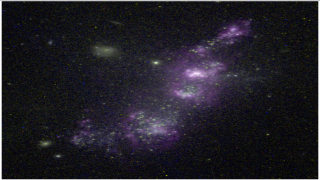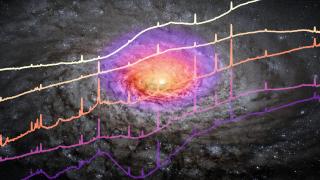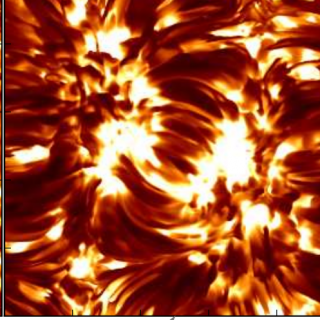Ramos Almeida, C.; Alonso-Herrero, A.; Levenson, N. A.; Asensio Ramos, A.; Rodríguez Espinosa, J. M.; González-Martín, O.; Packham, C.; Martínez, M.
Bibliographical reference
Monthly Notices of the Royal Astronomical Society, Volume 439, Issue 4, p.3847-3859
Advertised on:
3
2014
Citations
41
Refereed citations
36
Description
We present nuclear spectral energy distributions (SEDs) from 1 to 18
μm of a small sample of nearby, nearly face-on and undisturbed
Seyfert galaxies without prominent nuclear dust lanes. These nuclear
SEDs probe the central ˜35 pc of the galaxies, on average, and
include photometric and spectroscopic infrared (IR) data. We use these
SEDs, the clumpy torus models of Nenkova et al. and a Bayesian approach
to study the sensitivity of different IR wavelengths to the torus
parameters. We find that high angular resolution 8-13 μm spectroscopy
alone reliably constrains the number of clumps and their optical depth
(N0 and τV). On the other hand, we need a
combination of mid- and near-IR subarcsecond resolution photometry to
constrain torus width and inclination, as well as the radial
distribution of the clouds (σ, i and q). For flat radial profiles
(q = 0, 1), it is possible to constrain the extent of the
mid-IR-emitting dust within the torus (Y) when N-band spectroscopy is
available, in addition to near-IR photometry. Finally, by fitting
different combinations of average and individual Seyfert 1 and Seyfert 2
data, we find that, in general, for undisturbed, nearly face-on Seyferts
without prominent nuclear dust lanes, the minimum combination of data
necessary to reliably constrain all the torus parameters is J+K+M-band
photometry + N-band spectroscopy.
Related projects

Starbursts in Galaxies GEFE
Starsbursts play a key role in the cosmic evolution of galaxies, and thus in the star formation (SF) history of the universe, the production of metals, and the feedback coupling galaxies with the cosmic web. Extreme SF conditions prevail early on during the formation of the first stars and galaxies, therefore, the starburst phenomenon constitutes a
Casiana
Muñoz Tuñón

Nuclear Activity in Galaxies: a 3D Perspective from the Nucleus to the Outskirts
This project consists of two main research lines. First, the study of quasar-driven outflows in luminous and nearby obscured active galactic nuclei (AGN) and the impact that they have on their massive host galaxies (AGN feedback). To do so, we have been granted time with the Gran Telescopio CANARIAS (GTC) in the optical and near-infrared ranges
Cristina
Ramos Almeida

Magnetism, Polarization and Radiative Transfer in Astrophysics
Magnetic fields pervade all astrophysical plasmas and govern most of the variability in the Universe at intermediate time scales. They are present in stars across the whole Hertzsprung-Russell diagram, in galaxies, and even perhaps in the intergalactic medium. Polarized light provides the most reliable source of information at our disposal for the
Ernest
Alsina Ballester